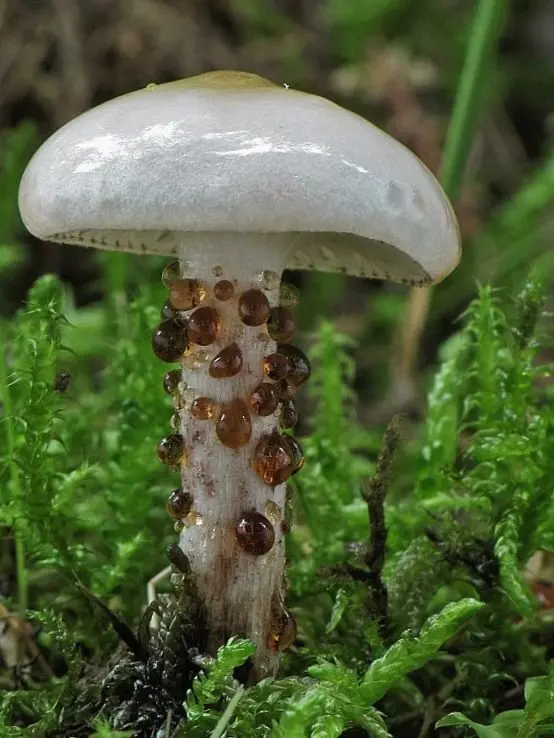Mokruha spotted (Gomphidius maculatus)
- Division: Basidiomycota (Basidiomycetes)
- Subdivision: Agaricomycotina (Agaricomycetes)
- Class: Agaricomycetes (Agaricomycetes)
- Subclass: Agaricomycetidae (Agaricomycetes)
- Order: Boletales (Boletales)
- Family: Gomphidiaceae (Gomphidiaceae or Mokrukhovye)
- Genus: Gomphidius (Mokruha)
- Type: Gomphidius maculatus (Spotted Mokruha)
- Spotted agaricus
- Gomphidius furcatus
- Gomphidius gracilis
- Leugocomphidius spotted

Mokruha spotted is an agaric fungus from the mokrukhova family.
Growing regions – Eurasia, North America. It usually grows in small groups, loves sparse thickets of shrubs, moss. Most often, the species is found in conifers, as well as in mixed forests, in deciduous – very rarely. Mycorrhiza – with coniferous trees (most often it is spruce and larch).
The mushroom has a fairly large hat, the surface of which is covered with mucus. At a young age, the cap of the mushroom has the shape of a cone, then it becomes almost flat. Color – gray, with ocher spots.
Records sparse under the hat, grayish in color, in adulthood they begin to blacken.
Leg mokruhi – dense, may have a curved shape. Color – off-white, there may be yellow and brown spots. Slime is weak. Height – up to about 7-8 centimeters.
Pulp It has a loose structure, white in color, but when cut in the air, it immediately begins to turn red.
Mushrooms appear from about mid-July and grow until early October.
Mokruha spotted is a conditionally edible mushroom. It is eaten – it is salted, pickled, but immediately before cooking, a long boil is required.









